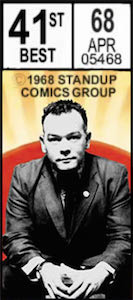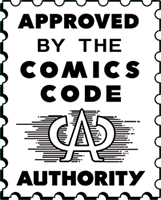Stew's Writing Written For Money
The slow death of the Edinburgh Fringe
I remember my first experience of the Edinburgh Fringe through a nostalgic haze. The Fringe was the postwar utopian ideal, but with jokes, experimental theatre and a lot of fried food; anyone could perform in it if they could raise the programme entry fee, still only a modest £246 today. Anyone might get audiences and even reviews. We slept in a church hall with no running water, but in a city that, until 1995, still had a 50p public bathhouse. You couldn’t get a bottle of water in Edinburgh today for 50p.
I went for the first of 25 Fringes to date in 1987 when I was 19. Wordsworth’s French revolution paen, “Bliss was it in that dawn to be alive, But to be young was very heaven!” reflected my Fringe experience. (Except, being a student, I was rarely up at dawn, though I was technically alive.) But I will now show you how the state of Comedy in the Fringe today reflects the cultural bankruptcy of late capitalism. And I will also plug my own £15 Edinburgh show (less than half the price of Michael McIntyre, and one that will nudge me into fringe profit when offset against decades of loss), and those of my friends and family, while appearing to rail against property values, lack of social access, and the exploitation of the workers (by which I mean comedians, actors and dancers, who have never done a decent day’s work in their lives).
The Fringe, the biggest, best and most diverse arts festival in the entire world, is almost entirely underwritten by participants, most of whom go home thousands of pounds in debt, and who offer more than 2,000 different performances every day, 35% of which are classed as comedy. But because there’s no committee of worthies trying to re-brand their shitty town by scheduling Jools Holland’s Big Band to close their provincial gin-sponsored krapfest, historically the Fringe has represented a unique middle ground between what artists want to do and what people might suddenly find, unexpectedly, they want to see, even though no one in the straight world thought it worth a platform. Hence Theatre de Complicite, Bill Hicks, Steven Berkoff, and, yes, Puppetry of the Penis.
The publication of the Fringe’s programme, and the operation of its box office, are overseen by the Festival Fringe Society, a registered charity. Once neither painfully elitist nor patronisingly populist, Edinburgh in August now threatens to become an oligarchy, a Chipping Norton of the arts, its sluices greased by Foster’s lager, rather than by country suppers and police horses.
In 2008, after 61 years, The Edinburgh Fringe fragmented. The Fringe’s “big four” venues re-defined themselves alongside the charitable foundation of The Edinburgh Fringe festival, rebranding as the Edinburgh Comedy festival (confusingly showcasing all genres of performance). The big four were, and remain, Pleasance, Underbelly, Gilded Balloon, and Assembly (the company that I call False Assembly, to distinguish it from its former parent venue, Edinburgh Council’s Assembly Rooms, which I now call the One and Only Real Assembly Rooms, and where I appear at 6.05pm).
Without asking the city’s permission, or notifying acts who had already paid to appear in their venues, the big four distributed literature giving the impression that the previously non-existent Edinburgh Comedy festival had been responsible for discovering decades of talent, rolled out their new brand, and set about re-pointing the fragile but functioning ecosystem of the Fringe for their own ends, with their own printed programme and their own box office. The collapse of the People’s Democratic Republic of Arty Farty Twats had begun.
The Edinburgh Fringe had been built up, collectively, over six decades, by the work of many hands, mostly unwaged, and if it belonged to anyone, it belonged to the public and performers who had floated it with their own funds for 61 years. But here was an act of corporate cattle rustling familiar from 30 years of government sell-offs.
The Etonian cabal behind the Edinburgh Comedy festival, Underbelly’s own Cameron and Osborne duo of Charlie Wood and Ed Bartlam, maintained that cost-assuaging sponsorship would now be easier to attract, and suggested they would moor an empty cruise ship in Leith, accommodating broke performers. Five years later, costs to performers in the Edinburgh Comedy festival have risen, including their subsidy of its spin-off fake Fringe brochure. The fabled bunk boat, like Marcus Garvey’s Black Star Liner out of Babylon, is still yet to arrive.
The establishment of the assumed Edinburgh Comedy festival in isolation from the Fringe festival saw many tacit threads of standardised practise – a mutually observed ticket release date for example – fall away, and the Fringe entered the deregulated free-market phase of late capitalism. Shows performed in the burgeoning Free Fringe cost nothing to see, and little to stage. The fiercely independent Stand underwrites all its shows, so performers lose nothing. But many performers in the simulated Edinburgh Comedy festival’s venues will agree to shed upwards of £10,000 this summer.
Sadly, the perception exists among agents, fringe-goers, and even performers, that Edinburgh Fringe festival shows outside the Edinburgh Comedy festival venues are invisible. And monopolising visibility costs money. (I, for example, was only able to get to write this high-visibility article via a costly go-between.)
The agents who nudge their acts towards the big four Edinburgh Comedy festival venues are most likely to be charging their clients huge fees for advertising and networking, because their eyes are set on the prize of TV deals for their own production companies to develop their own acts, and they feel a presence in the Edinburgh Comedy festival, as distinct from the Edinburgh Fringe festival, will best achieve this. They are not wrong.
There are many reasons why the Fringe is now much more expensive than 25 years ago. The property boom means that even the public bath house I used to wash has been converted into luxury flats, and Edinburgh residents, with no apparent grasp of cause and effect, criticise Fringe prices while boasting about how they tripled the rent of their flats for the summer.
The Fringe is less of a commercial trade fair than cynics assume. But the Edinburgh Comedy festival venues lie within easy walking distance in an increasingly grotesque Philip K Dick-style wasteland of alcohol-banner festooned architecture around Bristo Square. Here, the Edinburgh Comedy festival uses performers’ and sponsors’ money to maintain private bars in abandoned attics, where journalists and media types are schmoozed by PRs in branded anoraks, again paid for by the acts, coaxing them into their clients’ nearby shows. Lazy journalists reviewed only one Stand show between them in the national press last year. The 10-minute walk from the Edinburgh Comedy festival was too far and there was no private bar. A Fringe Leveson inquiry would be a mass humbling, with many flying pies.
Newspaper editors and TV bosses want to hear that their scouts have seen “must see” shows, when in fact having seen things everyone else has seen, when there are over 2,000 different shows daily, should be a sackable offence. Agents and PRs and the mendacious Edinburgh Comedy festival maintain a symbiotic relationship to control this consensus, like parasitical worms hanging out of the cat’s anus that is Bristo Square in August.
Everyone benefits from the perception that The Edinburgh Comedy festival is the Edinburgh Fringe festival. Except, in the long term, the performers, the public, and the once great open-access arts experiment that was the Edinburgh Fringe.
It can cost so much to perform in the Edinburgh Fringe now, and the very people being deterred by these costs are just the sort of independent minds we used to value as a society; the same people now, demonstrably, priced out of further education. It’s another example of the erosion of access, the reversal of social mobility, the entrenchment of privilege, and the gradual silencing of diverse voices. British comedy is much healthier than TV and radio output suggests. But more interesting talents desert its traditional spawning ground, broke, as promoters and performers replicate familiar marketable models. Last year being a young funnyman in a T-shirt, following the currently proven Russell Howard trope, appeared the best way to minimise massive financial risk. And the cycle of Fringe debt makes loyal slaves of artists, perhaps paying off their loss by working for their management’s own subsidiary production and promotion companies. Journalists, media types, and the delusive Edinburgh Comedy festival are complicit in supporting a broken system.
All the venues outside the Edinburgh Comedy festival, and inside the Edinburgh Fringe festival, must be supported more by the public, performers, press and media scum. Their lower overheads ensure the possibility of greater creative risk, and of the likelihood of seeing bizarre and sometimes brilliant shows, with no obvious commercial future, that are what makes the Fringe unique. One man vomiting mayonnaise into a circle while a woman shows slides of clouds (Market St Arches, 1993) is worth 50 Live at the Apollo wannabees.
Fringe goers shouldn’t penalise performers for appearing at Edinburgh Comedy festival venues by boycotting them outright. Instead, we must all increase our off-piste grazing. If journalists ditch their paid-for press releases and discover talent in the Edinburgh Fringe outside the Edinburgh Comedy Festival there will soon be no incentive for acts to accept its overheads, and the hidden costs of the promoters who collude with it, and the Fringe will flourish again. We’ve all been the person who complains about the homogenisation of the high street while shopping at the supermarket. Don’t turn the Edinburgh Fringe into Tescos, but let the juice of the fresh produce available elsewhere trickle down your chin this August. Old timers talk about the spirit of the fringe. It’s still there, and you can have all the fun of finding it.
Stewart Lee’s Carpet Remnant World is at the Assembly Rooms, George St, Edinburgh, 2-26 August, 6.05pm.
Stewart Lee’s pick of this year’s Fringe
With saving the spirit of the Fringe in mind, here are seven cross-genre tips. In the interest of full disclosure, I have had children with one of these. And it isn’t Künt & the Gang.
As Of 1.52pm on Friday April 27 2012 This Show Has No Title
Theatre piece by world’s best stand-up, Daniel Kitson.
7-26 August, times vary, Traverse, £12.
Tony Law: Maximum Nonsense
Canadian comic finally strikes the motherlode.
1-27 August, 12.30pm, the Stand, £8
Bridget Christie
Feminist standup in donkey costume.
1-26 August, 1.30pm, Assembly Rooms, £10
Jane Bom-Bane
Musical mechanical hat woman.
2-25 August, 4.45pm, Laughing Horse @ Finnegan’s Wake, free
Aaaaaaaaaaarghh! It’s the Greatest Show on Legs
1980s anarcho-comedy pioneers.
22-26 Aug, 9pm, Hive, £5
Nick Pynn
Transcendental acoustic avant-folk loops in candle-lit intimacy.
2-26 August, 9.45pm, Inalingua, £10
Künt & the Gang
Inventive sub-Depeche Mode musical obscenity.
3-26 August, Laughing Horse @ City Café, 10.30pm, free

